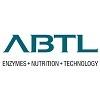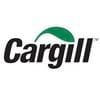Explore all the information on
Poultry gut health
The efficient conversion of feed into its basic components for optimal nutrient absorption is vital for both broiler and broiler breeder production and welfare. Gut health, an intricate and complex area combining nutrition, microbiology, immunology and physiology, has a key role to play. When gut health is compromised, digestion and nutrient absorption are affected which, in turn, can have a detrimental effect on feed conversion leading to economic loss and a greater susceptibility to disease. In addition, recent changes in legislation on the use of antimicrobials, differing feed requirements and more efficient birds highlight the need for a better understanding of gut function and gut health.
1. Introduction Broiler chicken diets primarily consist of cereals, which are often contaminated with multiple mycotoxins [1]. According to the Food and Agriculture Organization (FAO), above 25% of the global food crops are contaminated with mycotoxins [2], causing a USD 5 billion annual economic loss for North America [3]. The fungi Fusarium verticillioides and Fusarium proliferatum are prominent pathogens of corn and produce fumonisins (FB1, FB2, and FB3), while Fusarium...
Comments : 0
Recommendations: 0
Introduction to Immunity Immunity refers to the body's ability to resist or defend against infections, diseases, and other unwanted biological invasions. There are two main types of immunity. Innate immunity is the host's first line of defense against invading pathogens but some pathogens particularly immunosuppressive viruses have evolved sophisticated mechanisms to evade the host's innate immune responses and survive within the host. Adaptive Immunity targets...
Comments : 0
Recommendations: 2
Introduction High levels of production and efficient feed conversion are the need of the modern livestock industry which to a certain extent could be achieved by using specific feed additives. Feed additives are of great interest in the poultry industry due to their property to promote growth and performance. Common feed additives used in poultry diets include antibiotics, antioxidants, emulsifiers, binders, pH control agents and enzymes. Antibiotic feed additives as growth...
Comments : 9
Recommendations: 5
Marc Saad (Liptosa) presents Coccilip, a natural, plant-based product for use in coccidiosis.
*Certain information associated with products, their composition and claims may be different depending on the geographical region and may not be applicable in all countries. Liptosa reserves the right to adapt to the requirements and legislation in each case.
The information and technical recommendations provided herein are based on Liptosa's current knowledge and experience.
Liptosa reserves the...
Comments : 0
Recommendations: 2
Avian Influenza (AI), commonly known as bird flu, is a highly contagious viral disease affecting poultry and other birds. It poses a serious threat to the poultry industries, causing significant economic losses due to high mortality rates, trade restrictions, and culling measures. The disease is particularly...
Comments : 0
Recommendations: 3
Al Zimmerman, CEO of Axitan, discusses how their groundbreaking endolysin technology is transforming antibiotic-free production. He shares insights on productivity gains, cost savings, and the company's exciting plans for 2025, including new partnerships and product expansions....
Comments : 3
Recommendations: 3
April Santos (Evonik Animal Nutrition) explains why a holistic approach is key to maintaining gut integrity and maximizing poultry performance.
...
Comments : 0
Recommendations: 0
Greg Mathis (Southern Poultry Research) explains his research on anticoccidial sensitivity and offers insights on the use of ionophores during this Engormix interview at IPPE 2025 in Atlanta, USA....
Comments : 0
Recommendations: 1
Theresia Lavergne (Natural Biologics) explains her research with yeast components and phytogenics to enhance flock health and help sustain egg production in this Engormix interview during IPPE 2025 in Atlanta, USA.
...
Comments : 0
Recommendations: 0
Craig Coufal (Jones-Hamilton) shares research on the benefits of sodium bisulfate in performance and gut health, in this Engormix interview during IPPE 2025 in Atlanta, USA
...
Comments : 0
Recommendations: 1
Mike Persia (Virginia Tech) discusses direct-fed microbials, their modes of action, and their positive impact on energy and eggshell quality in this Engormix interview during IPPE 2025 in Atlanta, USA....
Comments : 0
Recommendations: 0
Increasing prices and low availability of common feed raw materials resulted in the use of alternative ingredients in animal production. These ingredients are often characterised by a high amount of soluble fibre resulting in lower performance and intestinal health issues that limits their inclusion rate in the diet. Bacillus amyloliquefaciens CECT 5940 (Ba) is a probiotic that can produce various metabolites and enzymes relieving the negative effects of soluble fiber and therefore it allows...
Comments : 2
Recommendations: 2
INTRODUCTION Feed management practices, aiming to improve animal welfare without increasing production cost, are becoming more important for the poultry industry (Mateos et al., 2012). In broilers, ad libitum feeding of pellet feeds is associated with a reduction in starch digestibility (Svihus and Hetland, 2001; Abdollahi et al., 2011; Serrano et al., 2013) and an increase in the incidence of metabolic problems (e.g., ascites and lameness) and mortality (Leeson et al., 1999;...
Comments : 2
Recommendations: 0
Dr. Hugo Ramirez (Evonik Animal Nutrition) discusses probiotics’ role in improving poultry health, from gut permeability to immune support. He highlights sustainable solutions like water-soluble tablets, offering efficient, eco-friendly options for poultry health management....
Comments : 0
Recommendations: 0
Henrique Brand (Evonik Animal Nutrition) shares Evonik’s approach to product development, emphasizing market-driven innovation. From probiotics to cost-efficient solutions like Guanamino, Evonik is advancing animal nutrition with cutting-edge technologies....
Comments : 0
Recommendations: 1
Dr. Alain Riggi from Phileo by Lesaffre points out some trials on how Actisaf Sc 47 HR+ delivers positive effects on poultry production...
Comments : 2
Recommendations: 2
Annie Kneedler (Chief of Party – USAID TRANSFORM at Cargill) comments on the TRANSFORM project activities and how to improve animal health through global collaboration, in this Engormix interview....
Comments : 1
Recommendations: 2
Cristiano Bortoluzzi (dsm-firmenich) explains how to counteract negative effects of cocci vaccination with the help of synbiotics in this Engormix interview during IPPE 2025 in Atlanta, USA....
Comments : 0
Recommendations: 0
Giseli Heim (Trouw Nutrition) explains water acidification and its benefits on poultry performance in this Engormix interview during IPPE 2025 in Atlanta, USA....
Comments : 0
Recommendations: 0







.jpg&w=3840&q=75)






























